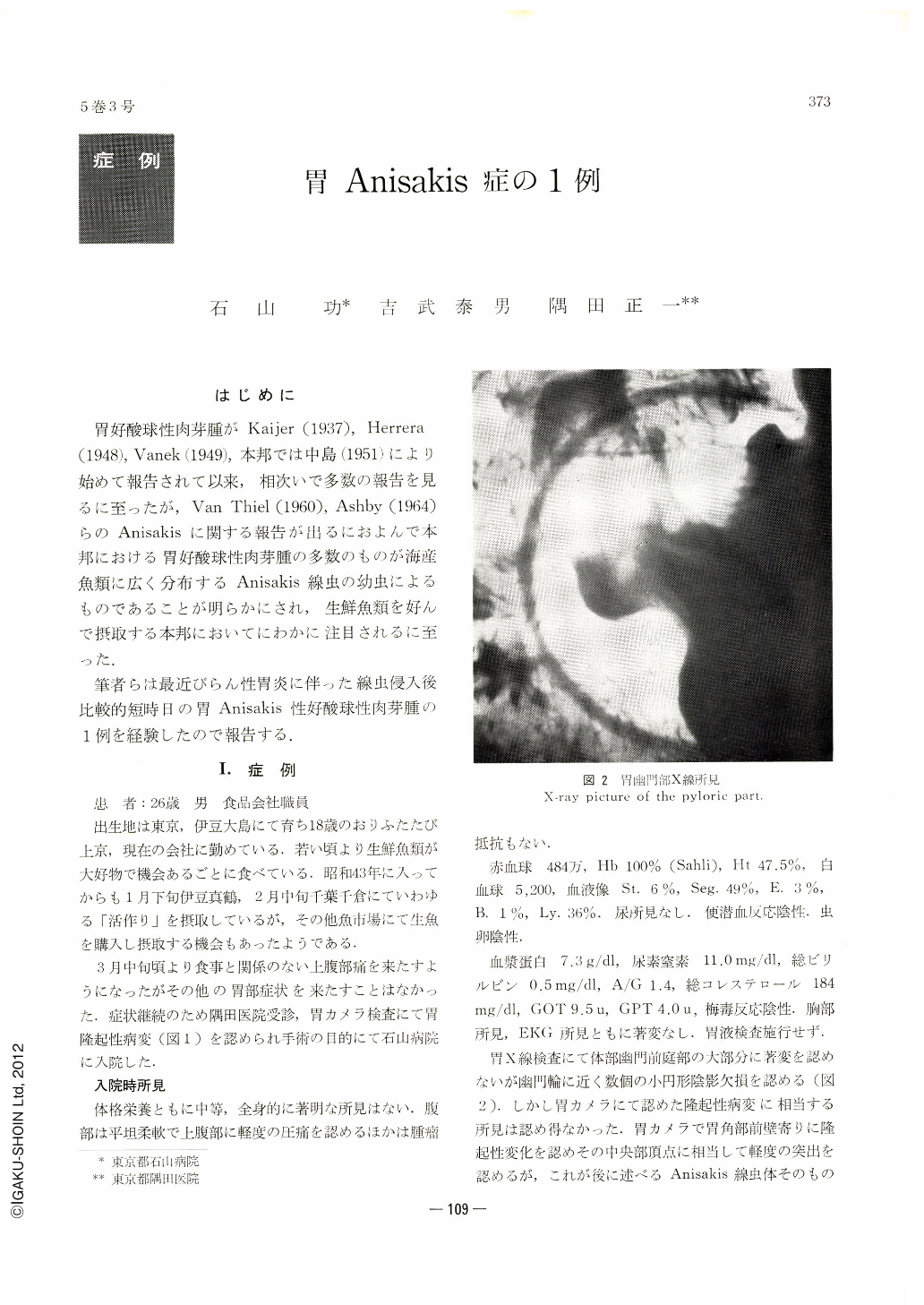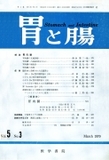Japanese
English
- 有料閲覧
- Abstract 文献概要
- 1ページ目 Look Inside
はじめに
胃好酸球性肉芽腫がKaijer(1937),Herrera(1948),Vanek(1949),本邦では中島(1951)により始めて報告されて以来,相次いで多数の報告を見るに至ったが,Van Thiel(1960),Ashby(1964)らのAnisakisに関する報告が出るにおよんで本邦における胃好酸球性肉芽腫の多数のものが海産魚類に広く分布するAnisakis線虫の幼虫によるものであることが明らかにされ,生鮮魚類を好んで摂取する本邦においてにわかに注目されるに至った.
筆者らは最近びらん性胃炎に伴った線虫侵入後比較的短時日の胃Anisakis性好酸球性肉芽腫の1例を経験したので報告する.
Eosinophile granuloma caused by Anisakis larva is a protruded lesion of the stomach attracting special attention in recent years. This is a report of it associated with erosive gastritis.
Case: a 26-year-old male.
The patient was very fond of fishes and he took them very often. Since 1 month prior to the first examination, he had begun to complain of dull pain in the epigastrium. At examination, a protruded lesion was recognized by gastrocamera on the anterior wall near the gastrio angle, so that gastrectomy was performed.
Histologically, the protrusion was eosinophile granuloma, with Anisakis larva in its center in the submucosa. Immune electrophoresis (Chiba Univ.) of the patient's serum as well as subcutaneous reaction (Yoken) against the Anisakis larva antigen was both positive. The existence of antibody was therefore anticipated.
Apart from this, there was recognized in the whole area of the antrum varioform erosive gastritis, which became more distinct and confluent toward the pyloric ring. Superficial necrotic changes were seen near the pyloric ring as well. Not in one of these changes was either Anisakis larva, eosinophile granuloma, or allergic reaction recognized. It was considered that erosive changes were not due to taking Anisakis larvaeor to formation of granuloma. Perhaps gastritis erosiva preceded so that it might have quickened the invasion of the larva into the gastric wall. It is suggested therefore that, besides the amount and frequency of ingestion of larvae, as reported hitherto, there are some factors involved on the stomach side which takes in the said larva.

Copyright © 1970, Igaku-Shoin Ltd. All rights reserved.


